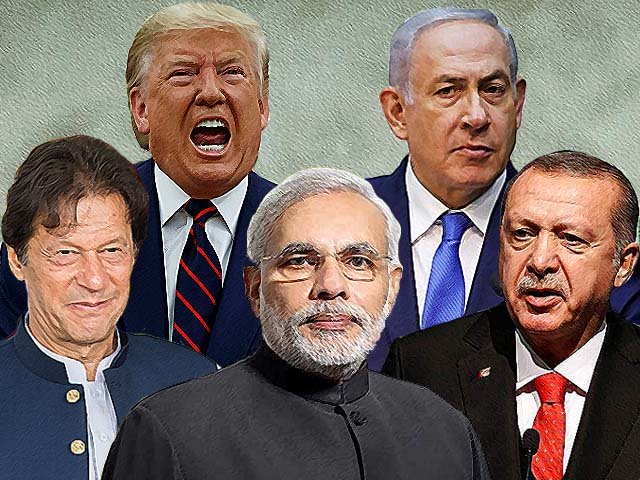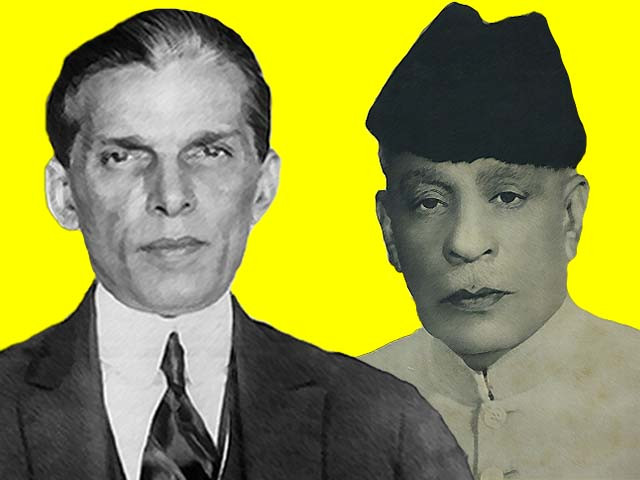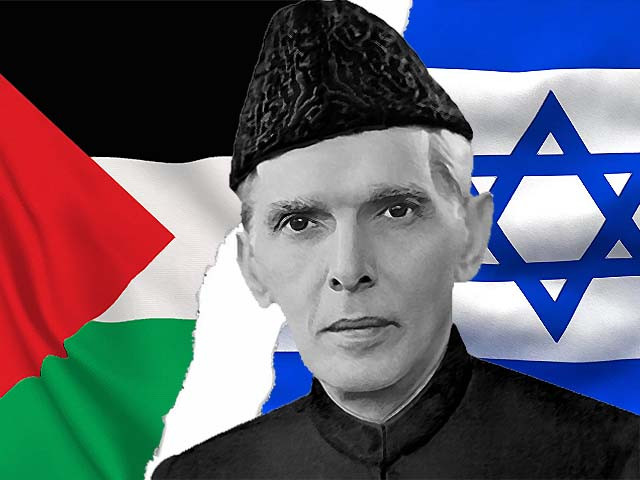
Why is the world embracing right wing politics?
It must be noted that the anger at immigrants and fear of cultural dilution is not found in the far-right alone
In 2019, Modi's re-election in India alongside Bolsonaro in Brazil added to the growing list of right-wing populist leaders around the world. With Trump serving as the president of the United States, Israel’s Netanyahu becoming the country’s longest-serving prime minister and a resurgent European far-right, the rise of populist strongmen as leaders in several countries has become a subject of intense scrutiny especially focused on why these changes are taking place.
In order to understand the issue at hand, I shall look at studies from the 90s to the 2000s, which will also be complemented by current research and then applied to political currents of different countries in order to understand the mechanism that has led to the rise of right-wing nationalist parties. However, before we move on, it is important to define populism.
‘Populism’ is the untrammelled will of the majority of the people put into policy. It is portrayed as anti-elitist and seeks to give voice to the ‘common man.’ Professor Bernt Hagtvet, a noted scholar in this field states its link with nationalism:
“Right-wing groups tend to perceive nations as unequal. They rank nations by worth, placing theirs on top. They insist on the excellence of their own nations, they emphasise its history as particularly glorious, they include allusions to its past in their political discourse.”
Oesch (2008) offers a very comprehensive analysis of how certain European right-wing populist parties such as the Austrian Freedom Party, French Front National, Norwegian Progress Party and Swiss People’s Party gained electoral traction. He found that a majority of their voters are working-class. He posits three factors that might explain why this is the case. Firstly, the existence of economic anxiety due to large-scale immigration of coloured people is perceived as a threat to jobs and welfare of the working class. Secondly, cultural anxiety due to immigrants and liberals instils a fear of a new culture replacing an older one that such people hold so dear. Lastly, alienation from political discourse due to the weakening of trade unions is also a factor which makes the working class feel disenfranchised. He finds that in all cases, cultural questions of identity were more important to this proletarian electorate than economic questions of resources.
Another interesting finding was that, contrary to the general assumption, the popularity of these parties was not linked to high rates of unemployment. Admittedly, while low levels of education generally skewed voters to the far-right, outliers also existed, for instance, in Switzerland where the electorate of the right-wing populist party consisted of middle and upper classes too.
Hagtvet (1994) also agrees that unemployment and market fluctuations do not have a direct effect on rise of right-wing populism. In some countries, the primary factor that led to the rise of these parties was rapid modernisation and quick transformation of their social structures without sufficient democratisation of the middle classes while in others, a weak political elite and fragmented middle-class parties paved their way. He gives examples from the 1930s where autocratic countries such as Poland and democratic societies such as Britain were not fertile grounds for fascism.
Conversely, Hagtvet quotes the example of Lebensraum in 1930s Germany, and in Italy, where re-establishment of old glorious empires spurred fascism. However, his most critical point is this: where unambiguously democratic traditional conservative parties exist, the far-right sentiment is absorbed in them and that fascism is greater where conservative parties are weaker. In England, the National Front lost its steam when Margaret Thatcher echoed some of its talking points. Similarly, in Germany, Franz Josef Strauss absorbed far-right sentiments in Christian Social Union (CSU) by maintaining relations with their leaders.
The modern approach is slightly more nuanced. Sociologist Elżbieta Korolczuk in her 2019 article ‘The Roots of Right-Wing Populism in Central and Eastern Europe’ lays the fault squarely on the shoulders of economic liberalisation and the cultural war between the far-right and the liberals. Inequality, she stresses, diminished support among eastern-Europeans for liberal democracy. Disillusioned with the liberal political elite and living in a society not sufficiently democratised, they turned to right-wing parties. Still, by and large, this agrees with Hagtvet’s observation and is also affirmed by Wodak et al. (2013) where Hungary’s Jobbik is given as an example. Its surge in popularity has been attributed to the erosion of authority amongst political institutions after a series of scandals.
Moving on from Europe to South America, we have Brazilian Jair Bolsonaro’s rise alongside the demise of the Brazilian Left. Here again, we see mass disillusionment with the political elite amongst the working and middle classes after the 2016 recession and the massive political corruption scandal. With the former leftist president Luiz Inácio Lula da Silva jailed and the World Social Forum, a global leftist assembly, losing influence, the working class shifted loyalties to Bolsonaro.
The United States elected the populist Trump, a move celebrated wildly by the American far-right. After 9/11, the far right in America has always felt emboldened. Increasingly, radicalised right-wing radio hosts and audiences reinforced each other, which spilled over to Fox News’ hosts and eventually politicians over time. It must be noted that while Trump’s Republican party is not a far-right party, his victory underlines how a sizeable percentage of the conservative electorate has been radicalised. For this reason, many far-right parties have over time adopted a moderate outlook to appeal to a broader audience. In Europe examples include the British National Party, Norwegian Progress Party (FrP), French National Rally and Dutch Pim Fortuyn List. Indeed, their pull is so strong on centrist voters that Merkel and Cameron were forced to denounce multiculturalism (in rhetoric) at the start of the previous decade whereas France’s Sarkozy enacted the Burqa Ban. More recently the incumbent Danish Left adopted anti-immigration stance as part of its election manifesto.
We must also discuss Turkey’s Erdogan and his electorate. Rabasa et al. (2008) states that resurgence of Islamism in Turkey was due to marginalisation and suppression by Kemalist secularists over the decades. However, they are quick to note that Erdogan’s AKP is center-right and not far-right. This is because it receives support from different social groups across the political spectrum. The same can be said of Imran Khan who came to power in 2018. While populist, his party too attracts a broad electorate in sharp contrast to Tehreek-e-Labbaik Pakistan, a new far-right religious political party seeking to preserve certain Islamic laws in Pakistan. It secured 4.21% of the popular vote despite its extremely narrow election manifesto.
The importance of the conservative population can be underlined further with the example of India. As Ayesha Jalal notes, the Hindutwa radicalisation has a sociological basis. Anger at the Muslims for the partition of their religious motherland or ‘Bharat Mata’ in 1947, the anger at secularists at the imposition of the Hindu Code Bills in the 1950s and the general deterioration of the economy in the 1970s all led to the recruitment of radicalised, unemployed youth by the Bhartiya Janta Party or BJP who showed them targeted means of expressing their anger on the minorities.
What is the solution to the resurgent far-right and how can we prevent further radicalisation of the conservative electorate? While it is tempting to present widespread education and re-distributive reforms as a counter, it must be noted that the anger at immigrants and fear of cultural dilution is not found in the far-right alone. Quebec’s ban on wearing religious symbols was neither motivated by a desire to reduce far-right vote-bank nor was it due to lack of education among the lawmakers. In fact, even among anti-immigrant parties, there exist the notable examples of Geert Wilders and Pim Fortuyn who combine their opposition to multiculturalism with libertarian values regarding the concepts of family, gender and sexuality. Not surprisingly, recently, the full-face veil was banned in Holland even though a very miniscule percentage of women wear it. In Denmark, for up to 25 hours per week, immigrant children are separated from their parents for ‘education in Danish values.’
The solution does not lie with social media ‘woke-ness’ either. As this analysis of the latest electoral defeat of the Labour Party in Britain by the journalist Helen Lewis showed, internet vigilantism leads to tribalism and needless polarisation hampering genuine engagement with disenfranchised voters. Indeed, it is very hard to wean people away from the far-right when entire electorates constituting millions of people are placed in neat boxes titled ‘bigots,’ ‘racists’ and ‘nazis.’ Not every conservative is a racist, just as not all voters of Modi’s BJP were Hindu, seeing as how eight percent of his electorate was Muslim.
The most pragmatic way forward, it seems, is to come to a compromise with regards to the cultural war among conservatives and progressives and move forward with a increased degree of acceptance of each other’s ideals. Otherwise, there is a risk of losing a major chunk of the conservative electorate to far-right extremism which will not bode well for minorities the world over.




COMMENTS (2)
Meeraj bhai in India minorities leave a peaceful life leftist ideology not only disillusioned islam but hindus also firstly leftist say that particular person is terrorist is islamic not the hindu. Hindus didn't encountered muslims before rise of left wing party congress you can research about it. Their were riots between parsis and muslims that communist tend to ignore. It is their agenda to show hindus want complete slaughter of minority
Comments are moderated and generally will be posted if they are on-topic and not abusive.
For more information, please see our Comments FAQ